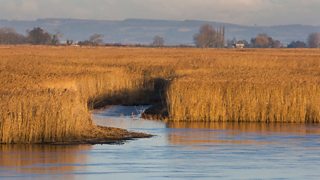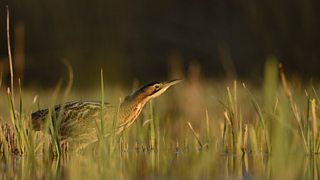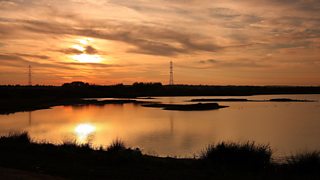From pitheads to plover – helping nature thrive after industry
RSPB
Partner organisation of the Watches
By Beccy Speight, Chief Executive of the RSPB

A view across ‘Grandad’s Garden’ at RSPB Old Moor, with wetlands in the distance. Image by Craig Heartly
To say I’m hugely excited about the prospect of seeing Gillian Burke presenting from our reserve each night during Autumnwatch would be something of an understatement!
I’m proud of all of our reserves, and so many of them have come from inauspicious beginnings to offer fantastic homes for nature. But even in such company, Old Moor’s story is pretty special!
As the camera pans across the golden autumnal reedbeds, the crowds of visiting and resident waterfowl and waders and the lush green spaces, you’ll be hard pushed to imagine that just over 30 years ago, this was one of the most polluted areas of Western Europe.
History of mining

This area, between Barnsley, Doncaster and Rotherham, was at the heart of South Yorkshire’s mining industry for many years.
It was an area scarred from decades of mining which had effectively left the River Dearne, and much of the valley it flows through, grey and lifeless.
It took the vision and determination of a small group of birders, who first recorded some amazing birds never before seen in the area, on the small ‘flashes’ or lakes created by mining subsidence, and then the local mining community who wanted to protect these small but precious pockets of nature, to make a difference.
Following the miners’ strike of the early 1980s, every local pit had closed by 1993. It left the area bereft, both in its physical landscape and the wellbeing of its population.
A new nature reserve

Rich silt was taken from RSPB Blacktoft Sands reserve to encourage reed beds to develop at Old Moor.
When work began on clearing the area, and the huge Wath Manvers colliery complex was bulldozed, 700,000 tonnes of top soil was needed to allow planting in the 6sq km barren site. The soil was removed from Old Moor, effectively creating the wetland reserve, which locals worked hard to protect.
The RSPB took over its running from Barnsley Council in 2003, and together with partners in the , now manages a number of smaller sites nearby, all remnants from the mining industry, to create a wonderful wildlife corridor.
Much to everyone’s delight, Old Moor now has breeding bitterns, is visited each Autumn by thousands of migrating birds, including golden plover and is a fantastic green resource for the local community. Families in particular love the trails, the family hide, the nature playground and the specially-themed gardens. We’re delighted that a recent National Lottery Heritage Fund grant is allowing us to add even more family-friendly features as well as creating new habitat.
Story of hope

Bitterns have been breeding at Old Moor since 2012. Image by Ben Andrew
Old Moor is an amazing story of hope. What better example is there of how nature can recover, given the space and encouragement to do so? Having become established, the site now gives back in abundance, not just to visiting and resident wildlife, but to the local community and the 100,000 people who choose to spend time here each year.
We’re at a vital moment in our history, where we now understand what damage our actions can and have caused nature but also, where we know what needs to be done to turn this around and what’s possible if we take action now.
As you sit and enjoy what will undoubtedly be an inspirational Autumnwatch this year, I hope you’ll take a proper look at Old Moor, maybe even visit it when you get the chance, and also take inspiration from the story it has to tell - that together, making the right choices, we can make a difference for nature.

A stunning sunset over Old Moor. Distant pylons are the only hint at how close the nature reserve is to huge urban populations. Image by Matthew Capper
